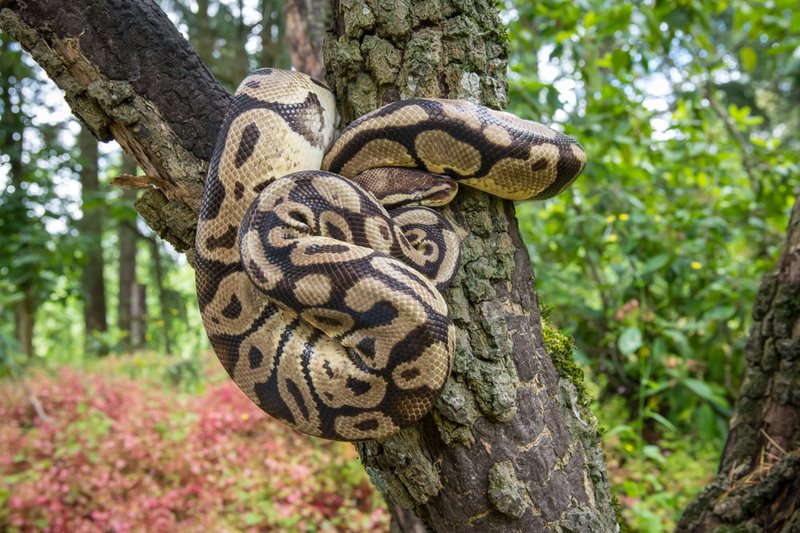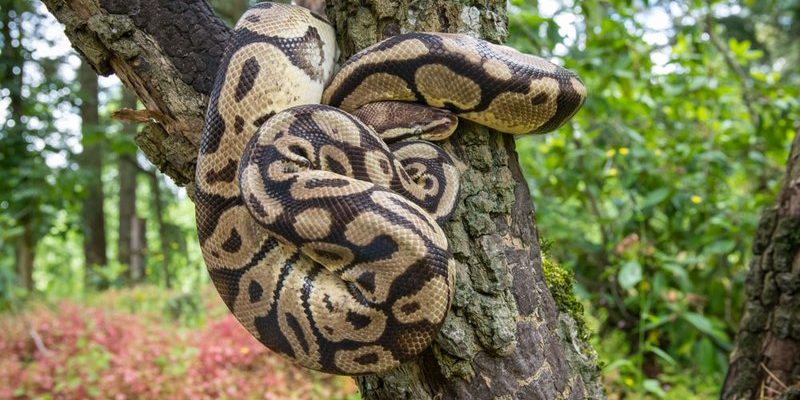
Imagine walking through a lush, green forest where the trees whisper secrets to one another. Among the underbrush, you might spot a ball python, expertly camouflaged and minding its own business. Sadly, habitats like these are shrinking due to human activity, and this raises an important question: Is the ball python endangered? In this article, we’ll dive deep into the status of these amazing snakes and explore the conservation efforts aimed at protecting them.
Understanding the Ball Python’s Habitat
To grasp the pressing conservation issues surrounding ball pythons, we first need to understand their natural environment. Ball pythons, or *Python regius*, are native to sub-Saharan Africa, where they typically inhabit grasslands, savannas, and forests. These areas provide the necessary cover and food sources that these snakes rely on.
Here’s the thing—ball pythons are often found in regions where human development is rapidly increasing. As cities expand and agriculture spreads, their natural habitats are being destroyed or altered. Imagine walking into a room and finding half of it suddenly gone. That’s what these snakes are facing in their own homes, which makes it harder for them to find food, shelter, and breeding grounds.
Without suitable habitats, ball pythons may struggle to survive. They rely on a diverse ecosystem to hunt small mammals, such as rodents, and to stay safe from predators. The loss of biodiversity in their environment also impacts them directly, leading to weakened populations and difficulty in adapting to new challenges.
Are Ball Pythons Endangered? The Current Status
Now, let’s tackle the big question: are ball pythons endangered? The short answer is no, but it’s not that simple. According to the International Union for Conservation of Nature (IUCN), ball pythons are classified as “Least Concern” due to their wide distribution and stable populations in many areas. However, this classification can be deceiving.
While they may not be at immediate risk of extinction as a species, localized populations can be threatened. Over-collection for the pet trade and habitat destruction are significant threats. Here’s a sobering thought: while ball pythons are bred widely in captivity, wild populations still face pressures from illegal poaching, land conversion, and climate change.
This means that while many ball pythons live comfortably in homes around the world, their cousins in the wild might not be so lucky. It’s essential to keep a close eye on their status and ensure that we aren’t taking them for granted.
Conservation Efforts for Ball Pythons
Efforts to conserve ball pythons largely focus on protecting their habitats and managing wild populations sustainably. Many organizations and local governments are working to tackle the challenges these snakes face. Here are a few key strategies:
- Habitat Protection: Preserving natural habitats is crucial. This involves protecting wildlife reserves and national parks where ball pythons naturally thrive.
- Sustainable Practices: Encouraging sustainable land management in rural areas helps minimize habitat destruction while still allowing local communities to thrive.
- Education and Awareness: Many groups are raising awareness about the importance of ball pythons within their ecosystems, aiming to change perceptions that may lead to poaching and mistreatment.
Conservationists are advocating for stricter regulations on the trade of ball pythons, ensuring that the demand for these snakes doesn’t lead to harm in the wild. By promoting captive breeding programs, they help reduce the pressure on wild populations while providing pet owners with healthy, ethically sourced animals.
Challenges Faced by Ball Pythons
Despite ongoing efforts to protect ball pythons, significant challenges remain. One of the main issues is the *illegal wildlife trade*. Many people are drawn to owning exotic pets, and ball pythons are no exception. Poaching for the pet trade leads to a decline in wild populations, making it harder for the species to recover.
Additionally, habitat destruction is a persistent problem. As agriculture expands, forests and grasslands that are home to ball pythons are cleared for farming or urban development. This not only reduces their numbers but also fragments their habitat, making it harder for them to find mates and food.
Climate change poses another serious threat. Rising temperatures and changing weather patterns can disrupt the delicate balance of their ecosystems, impacting breeding and food availability. As temperatures rise, many species, including ball pythons, may find their habitats unsuitable.
What Can You Do to Help?
Feeling inspired to make a difference? Here are some simple yet impactful ways you can help protect ball pythons and their habitats:
- Support Responsible Breeders: If you’re considering a ball python as a pet, choose to adopt from reputable breeders who prioritize ethical practices.
- Get Involved: Join local conservation efforts or support organizations dedicated to wildlife protection. Your voice matters!
- Educate Others: Share what you learn about ball pythons and conservation efforts with friends, family, and social media. Awareness is key to change.
Even small actions can have a ripple effect, contributing to the larger goal of conserving these amazing creatures.
The Future of Ball Pythons
Looking ahead, the future of ball pythons hinges on awareness and proactive measures. While they’re currently not endangered, it’s essential to remain vigilant. Populations can change rapidly based on environmental factors and human activities.
Conservationists continue to advocate for better protections, and with ongoing education, we can foster a more sustainable relationship between humans and wildlife. Supporting the efforts to preserve these unique snakes not only benefits the ball pythons but also the rich biodiversity of their habitats.
In conclusion, while ball pythons are not currently endangered, their survival depends on the collective actions of individuals and organizations. By staying informed and taking steps to protect their habitats, we can ensure that these stunning snakes continue to grace our world for generations to come.

